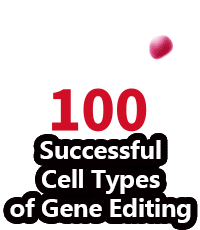PNAS Papers on Retinal Development, Adoptive T Cell Transfer, Blood Cell Differentiation
Editor's Note: Some of the articles described below are not yet available at the PNAS site, but they are scheduled to be posted some time this week.
In the Proceedings of the National Academy of Sciences this week, a University of Texas Southwestern Medical Center-led team shares findings from a forward genetics-based search for causal mutations and genes behind retinal development in a mouse model. "Understanding the mechanisms of retinal development and homeostasis is essential for the advancement of retinal regeneration strategies and conception of novel therapies for multifactorial retinal diseases," the researchers say. They relied on mutagenesis experiments, optical coherence tomography screening, and automated meiotic mapping to track down integrity-related mutations in mice, which were explored in more detail with approaches such as CRISPR-based gene editing, imaging, or single-cell RNA sequencing.
Researchers at the National Institute of Allergy and Infectious Diseases characterize T cell receptor interactions with neoantigens in samples from a metastatic colorectal cancer patient who was successfully treated with an adoptive T cell transfer (ACT)-based immunotherapy targeting a KRAS G12D tumor mutation. Using a biochemical, structural, and functional assays, the team took a look at the T cell receptors at play in the expanded tumor-infiltrating lymphocytes that contributed to ACT treatment responses, demonstrating that the T cell receptors appeared to have particularly high affinity interactions with KRAS neoantigens in the tumor. "The findings from the current study revealed the potential of a structural approach to inform clinical efforts in targeting KRAS-G12D tumors by immunotherapy," the authors report, "and has implications for T cell-based immunotherapies in general."
A team from China and the US presents findings from a single-cell RNA sequencing-based analysis of bone marrow and umbilical cord blood cells, aimed at understanding red blood cell differentiation from hematopoietic stem cells. With the single-cell transcriptome approach, the researchers profiled primary human terminal erythroid cells from adult bone marrow and neonatal umbilical cord samples, uncovering gene expression shifts and potential regulatory features in differentiating polychromatic erythroblast and orthochromatic erythroblast cells at different stages of development during hematopoietic stem cell differentiation. "By single-cell sequencing, we obtained a fine-resolution phasing of human terminal erythroid differentiation," they report, "and a set of gene signatures related to the development and maturation of erythroid cells."
Ubigene Biosciences is co-founded by biological academics and elites from China, the United States, and France. We are located in Guangzhou Science City, which serves as a global center for high technology and innovation. Ubigene Biosciences has 1000㎡ office areas and laboratories, involving genome editing, cell biology technology, and zebrafish research. We provide products and services for plasmids, viruses, cells, and zebrafish. We aim to provide customers with better gene-editing tools for cell or animal research.
We developed CRISPR-U™ and CRISPR-B™(based on CRISPR/Cas9 technology) which is more efficient than general CRISPR/Cas9 in double-strand breaking, CRISPR-U™ and CRISPR-B™ can greatly improve the efficiency of homologous recombination, easily achieve knockout (KO), point mutation (PM) and knockin (KI) in vitro and in vivo.
Genome Editing Platform
——Focusing on the Application of CRISPR-U™ and CRISPR-B™ Gene Editing Technology
Cell Biology Platform
——Focusing on primary cell
2. Provides culture strategies and related products for different cell types.3. Provides cell biology-related services such as cell isolation, extraction and validation.
